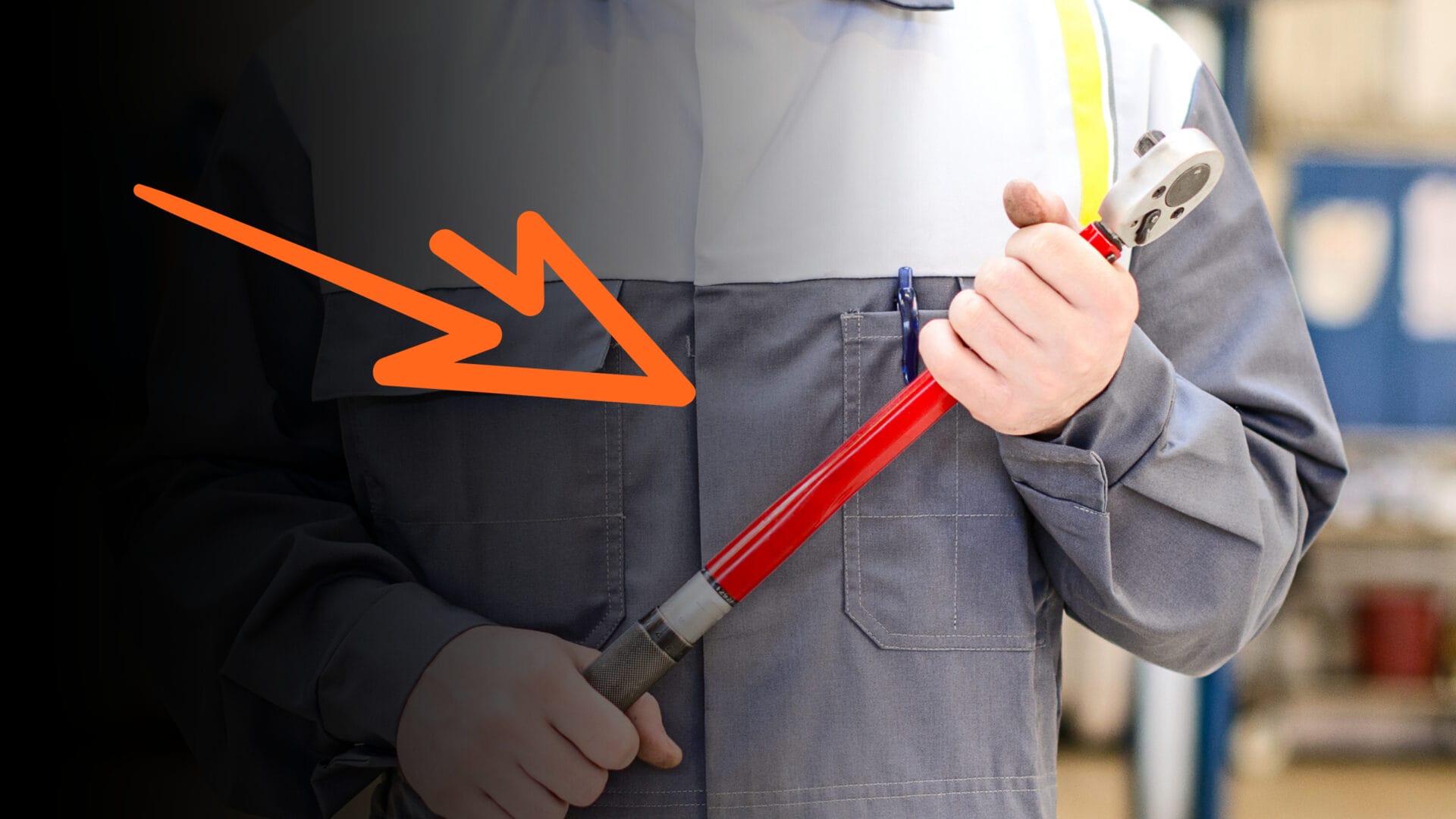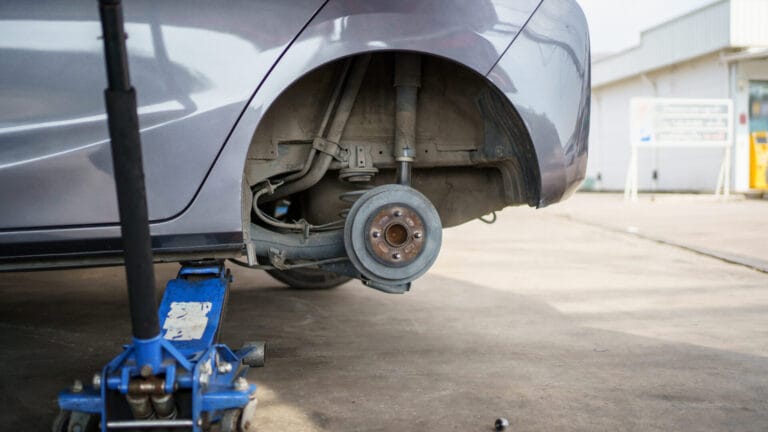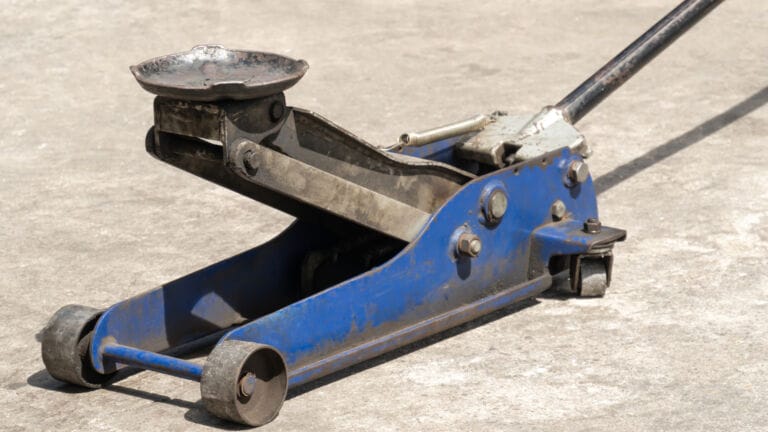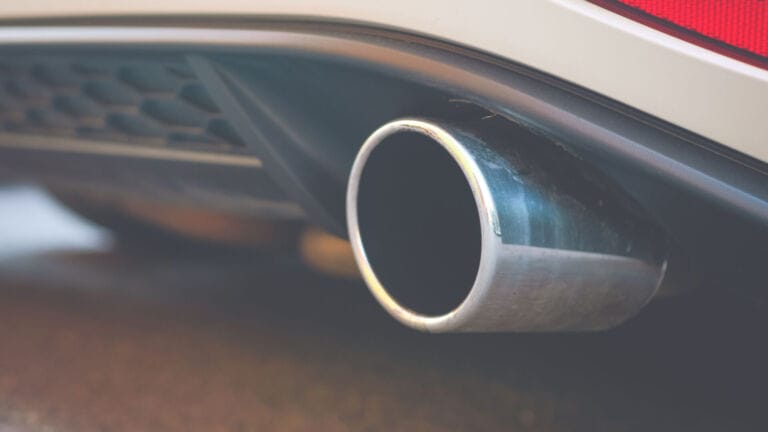Can I use A Torque Wrench As A Breaker Bar
If you are a DIY enthusiast, you might have encountered the dilemma of using a torque wrench as a breaker bar. While both of these tools look similar, they serve different purposes. A breaker bar is used to loosen stubborn bolts, while a torque wrench is used to tighten bolts to the preset torque to avoid overtightening or under-tightening. So, can you use a torque wrench as a breaker bar?
Using a torque wrench as a breaker bar may seem like a clever shortcut, but it’s not the best idea. It will damage the torque wrench’s delicate internal components and throw off its calibration and accuracy due to different torque strengths and opposite directions.
A breaker bar is built with extra strength and maximum leverage to loosen stubborn bolts or nuts. It is designed to transfer more than 2,000 ft/lbs of torque power to loosen nuts and bolts. While a torque wrench’s maximum torque strength is 250 ft/lbs to tighten bolts. Did you realize just what I said? 250 and 2000, there is a large gap between these torque numbers.

It’s like fitting a giant elephant in a small outfit. So what will happen if you try to do so? The outfit will tear, right? Something like this will happen with the torque wrench as well.
Moreover, a breaker bar is used to loosen bolts, while a torque wrench is used to tighten them. So, the torque wrench has to work in opposite directions. It won’t be able to handle so much pressure, will strain, and may get damaged or even face breakage.
And it doesn’t end here. To understand why this act is not recommended, you need to dive in root-like what they are, how they work, their capabilities, what will happen if you use a torque wrench as a breaker bar, potential risks, and so on. So, let’s dive in without wasting a minute further.
Understanding Torque Wrench And Breaker Bar

What Is A Torque Wrench
A torque wrench is easy to use, and reliable tool that will save you from any tightening mishaps and prevent catastrophic failure of fasteners. This magic wrench is calibrated and has an internal mechanism that allows it to measure and limit the amount of torque being applied.
How Does Torque Wrench Work
When you turn the handle, it applies force to a spring or deflecting beam mechanism inside the wrench. As you continue to turn the handle, the mechanism tight bolts, and when it reaches the preset torque value, it will release or click, indicating that you have reached the desired torque. By doing this, you ensure that the fasteners are tightened to the manufacturer’s recommended torque setting and you don’t over-tighten or under-tighten them.
What Is A Breaker Bar
A breaker bar is the heavyweight champ in the world of automotive and machinery repairs. It’s like the superhero of wrenches, with its long, sturdy metal handle and a swiveling head. It allows you to apply extra torque or leverage and can tackle even the toughest bolt and nut without straining yourself.
How Does A Breaker Bar Work
Breaker bar can work with a variety of socket sizes, making it a versatile tool in a variety of situations. Its gorgeous torque limits allow it to handle more than 2,000 ft/lbs. You just need to apply pressure on the handle and turn it in the desired direction; it will transfer that force to the bolt or wheel nut and loosen it. And let’s not forget about its friendly nature, its comfort grip fits perfectly in your hand and allows you to work with ease and precision.
Differences Between Torque Wrench And Breaker Bar
As we already know, both torque wrenches and breaker bars are designed differently, with different torque capacities to serve different purposes. Now, let’s know the differences in details so you can understand why you can’t use a torque wrench as a breaker bar.

Function
A torque wrench is not only about tightening but tightening to a precise and predetermined torque value. The torque wrench’s goal is accurate and controlled tightening. A breaker bar’s goal is to break stubborn bolts with less effort.
Applications
A Torque wrench is used in assembling engines, suspensions, and other applications where precise torque is critical. Most commonly, breaker bars are used in automotive repairs, construction, and situations requiring forceful loosening, such as when rusted or stuck fasteners need to be freed.
Compatibility
Torque wrench can accept a maximum of 250 ft lb torque power. If you apply more than this torque specifications limit, it can strain, throw off calibration, and face breakage. On the other hand, a breaker bar can withstand up to 2000ft/lbs of torque power and easily loosen or tight fastener bolt or nut.
Materials
Torque wrenches are often crafted with durable stainless steel. It’s super lightweight, weighing around 2-5 pounds. So you can carry and use it anywhere you want. Breaker bars are mostly built with solid metal for heavy-duty work. It comes with a larger handle and can weigh 5- 25 pounds.
Internal Mechanism
Torque wrench features a calibrated scale or digital display for torque level measurement. The breaker bar lacks an internal mechanism; it doesn’t have a ratcheting or specified torque setting feature.
Variations
Split beam torque wrench, click type torque wrench, digital torque wrench, etc., are available torque wrench types. Breaker bars have little variation in design but come in different handle lengths for increased leverage.
Safety
Torque wrench is safe if you use it as a torque wrench. Clicker torque wrench will give a signal when it reaches the preset torque limit and stops itself. But you need to be cautious when using a breaker bar. Because too much force can cause you to lose control and cause metal splinters to fly. Sometimes, the bolt can shear off, and the handle can also snap off.
However, that doesn’t mean using a torque wrench as a breaker bar is safe. That is more risky, I already told you that.
Price
As torque wrench is precision-engineered with calibrated scales or digital displays; they are expensive. A breaker bar is affordable, as it’s simply designed with large leverages.
Breaker Bar vs. Torque Wrench
| Feature | Torque Wrench | Breaker Bar |
| Function | Tightening to Precise Torque | Loosening Stubborn Bolts |
| Variations | Click-type, Beam, Electronic, etc. | Different Handle Lengths |
| Internal Mechanism | Ratcheting Mechanism | Lacks Internal Mechanism |
| Material | Lightweight Stainless Steel | Robust Metal Material for Heavy-Duty |
| Ease of Use | Calibrated Scales/Digital Displays | Straightforward, No Calibration |
| Applications | Engine/Suspension Assembly, Precision Work | Automotive Repairs, Forceful Loosening |
| Weight | Generally Lightweight | Heavier, Built for Durability |
| Torque Power | Precision Torque Application | Raw Force for Loosening |
| Price | Relatively Higher | Affordable |
| Versatility | Specific Torque Settings | General Forceful Loosening |
| Handle Design | Compact Design | Long Handle for Increased Leverage |
| Safety | Safe | Requires Caution to Avoid Injury |
What Are The Potential Risks Of Using A Torque Wrench As A Breaker Bar
Using a torque wrench as a breaker bar comes with several potential risks and drawbacks.
While a torque wrench is designed for precision tightening, not forceful loosening, attempting to use it as a breaker bar poses a risk to the tool’s integrity, accuracy, and safety features. It’s time to be aware of the potential risks involved with this act. Let’s explore them.Ineffective Loosening:
Torque wrenches lack the length and strength that make breaker bars effective in loosening stubborn bolts. Attempting to do such tasks may prove inefficient and frustrating.
Risk of Damage:
A torque wrench doesn’t have the durability to withstand as much pressure as a breaker bar can. Thus, applying excessive force to the torque wrench or using it in ways it was not designed for can cause it to lose its structural integrity.
Loss of Calibration:
The delicate calibration of a torque wrench won’t be able to measure and control the amount of force being applied in a breaker bar. Its limit is only 250ft/lbs, while a breaker bar can withstand more than 2000ft/lbs. As a result, this calibration will be lost or altered.
Strain on Internal Components:
The internal components of a torque wrench are delicate. If you put too much force into the torque stick, it will weaken its internal ratcheting mechanism, resulting in internal failure.
Reduced Accuracy:
When you use a torque wrench as a breaker bar, the force will be too much for the torque wrench to handle and read. An act like this will lead to ratchet misalignment and throw off its accuracy.
Potential for Breakage:
The slender and precise design of a torque wrench is not built to handle the sheer force required in breaker bar applications. Attempting to use it in this manner may lead to breakage, posing safety risks to the user.
Safety Concerns:
Using a torque wrench as a breaker bar will cause a lack of control. As a result, your torque wrench can slip, increasing the risk of injury to the user and damage to the workpiece.
Voided Warranty:
Many torque wrenches come with warranties that cover manufacturing defects and issues arising from proper use. Using the tool outside of its intended purpose, such as using it as a breaker bar, may void the warranty.
What Is An Alternative To a Breaker Bar?
If a dedicated breaker bar is unavailable, several alternative tools can be used to perform tasks similar to those of a breaker bar. While these hand tools alternatives may not provide the same level of leverage or effectiveness, they can still be handy in certain situations:
Impact Wrench:
An impact wrench is a versatile tool that can handle multiple tasks with ease. With its high torque and powerful rotational force, it has the added advantage of providing additional torque and power compared to a traditional breaker bar. This makes it a fantastic tool for loosening stubborn nuts and bolts that may be rusted or over-tightened.
The beauty of an impact gun is that it combines the functionality of both a power tool and a hand tool, giving you the best of both worlds. Just attach the appropriate socket to your Impact Wrench, and you’ll have all the power you need to tackle stubborn or rusted fasteners.
Ratchet Wrench with a Pipe:
A ratchet wrench can definitely be used as a breaker bar in certain situations. While a breaker bar is specifically designed to provide maximum torque for loosening stubborn bolts or lugs, a ratchet wrench can also serve this purpose with a little bit of creativity. The key is to use the ratchet wrench with an extension bar, which will give you more leverage and allow you to apply greater force when needed.
Just make sure that the extension bar and the ratchet wrench are securely connected, and always use caution and proper technique when applying force.
Cheater Pipe:
A Cheater Bar is simply an extension pipe that you attach to your existing socket wrench or ratchet handle to increase leverage and torque. This extra length allows you to apply more force and make loosening stubborn bolts or nuts a breeze.
Just slide the Cheater Pipe onto your tool, position it on the fastener, and apply steady pressure in the direction you want to turn. It’s like giving your wrench a power boost!
Adjustable Wrench:
An adjustable wrench can indeed be used as a breaker bar in need. It’s not as strong and specialized as a dedicated breaker bar, but still, it can get the job done. The key is to make sure that the adjustable lug wrench is high-quality and has a long handle for added leverage.
By using it at the right angle and applying steady pressure, you can effectively loosen or tighten stubborn bolts or nuts.
Pliers with Long Handles:
A pair of pliers with long handles can also be used as a breaker bar. While they may not be specifically designed for that purpose, the long handles provide extra leverage, allowing you to apply more force and torque for loosening or tightening stubborn nuts or bolts.
However, it’s important to remember that using pliers as a breaker bar may put extra strain on the tool and increase the risk of damage or injury.
FAQ
Can You Use A Torque Wrench To Break Bolts?
Yes, you can use a torque wrench to break bolts. If the bolts are too tight and require more torque than a torque wrench (250 ft/lbs) can handle, then the torque wrench itself may break instead of the bolts.
Can I Use Impact Wrench Instead of Breaker Bar?
Yes, you can use an impact wrench instead of a breaker bar, as both of these tools are built with the same purpose (loosening nuts and bolts) and can withstand high torque power.
Do I Need A Breaker Bar?
If you need to loosen stubborn nuts and bolts that require too much effort, yes, you need a breaker bar. When small loosening tools like ratchet or wrenches are unable to complete the task, a breaker bar is what you need. It’s designed to withstand high torque power to lose frozen or such nuts and bolts.
Is Impact Or Breaker Bar Stronger?
Though the impact wrench has much more acceleration, breaker bar has more leverage and torque power, making it stronger than impact wrench.
Is A Torque Wrench Better Than A Breaker Bar?
A torque wrench is better than a breaker bar when you want precise bolt tightening. But when you need to apply excessive force to loosen or tighten a nut or bolt, a breaker bar is the better option.
Verdict:
Understanding the tool’s capabilities can save you time, money, and potential damage. While a torque wrench and a breaker bar may appear similar, they serve different purposes.
A torque wrench is designed to apply a specific amount of torque to fasteners, ensuring proper tightening without over-tightening. On the other hand, a breaker bar is used to loosen stubborn or tightly fastened bolts or nuts. It’s important not to use a torque wrench as a breaker bar because it can damage the tool or lead to inaccurate torque readings.
Instead, invest in both tools for the right equipment for each task. By using the right tool in the proper way, you’ll ensure safer and more efficient car maintenance.
If you’re looking for more insightful tips on car tools and maintenance, feel free to explore our other blog posts. We’re here to help you navigate the world of automotive maintenance with confidence and expertise.






